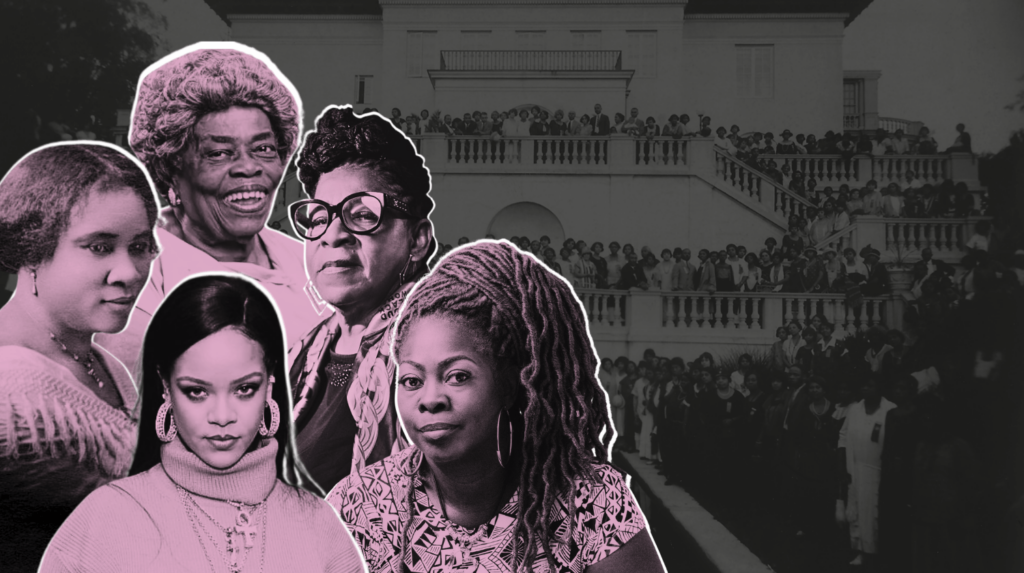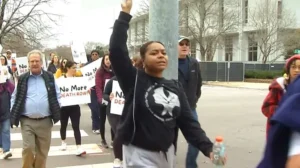By Gwen McKinney
This commentary is part of Unerased | Black Women Speak’s December exploration Claiming Our Space: Preserving Our Future.
Today I live on the outskirts of the nation’s capital, about 15 miles south of the city center, in Prince George’s County, MD– a place of manicured lawns and open green space, considered the wealthiest predominantly Black enclave in America.
Despite the celebration, “PG County” exists in the shadows of Washington, DC and is a symbol of Black progress in the face of persistent lags and inequities.
When I moved to DC in 1982, it sported the nickname ‘Chocolate City’ – celebrating a diverse and vibrant Black population of 70 percent. By 2000, DC’s Black residents dropped to 51 percent. With the last Census in 2020, our ranks dwindled to 44.4 % percent.
To explain what happened and why, I can reflect on my own personal story of coming of age and finding my space in a power town. Young and ambitious, a child of the ‘60s, I arrived less than 15 years after the riots spurred by the assassination of Martin Luther King.
I settled in the Columbia Heights neighborhood that borders the 14th Street corridor. Rage, rebellion and the National Guard torched those streets into a war zone. Though the fires had subsided, the remains of bombed-out, boarded-up structures rendered this predominantly Black strip a smoldering wasteland.
Crystallized memories of 14th Street take me back to the mid-1980s and my bus rides downtown. Window-side and perplexed, I’d wonder why a three-block expanse from R Street to T Street was always packed with people. Black folks, men and women, young and old – sometimes five deep. They claimed the sidewalk, partying and convening; or barely there.
One day I turned to another bus passenger and asked, “What are they doing out there?”
The elderly woman studied my face for a moment to discern whether the query was based on innocence or ignorance, then leaned in and whispered furtively a single word: drugs.
The crack epidemic had hit DC, most evident along the 14th Street corridor where the open-air drug market thrived undisturbed. Symbols of neglect were replaced with far more devastating loss and hopelessness.
Nancy Reagan was declaring “Just say no” and successive administrations were sharpening their arsenals for a sustained war on drugs. Their victorious conquest erased the people from the streets of DC to populate prisons and jails throughout the region.
The U Street strip, once known as Black Broadway, intersects with the 14th Street corridor. It was an area where arts, culture, and Black achievements were revered from the early 1900s throughout the pre-integration 1960’s. Perversely, during the Jim Crow days Black self-reliance flourished.
U Street was also set ablaze in 1968, followed by the deconstructed ravages of urban removal. For what seemed an eternity throughout the 1980s, a half-mile of U Street was reduced to rubble, dug out by deep craters of construction. The middle of the street was closed, impassable to traffic, cranes and jackhammers were permanent fixtures.
Any semblance of vitality that once emanated from those pavements was vanquished. Businesses were killed, foot traffic blockaded, and residents forced to relocate.
In 1991, it appeared a reversal of fortunes would revive U Street, commencing with the opening of the Metro station, a project that had been stalled since the late 1970s. Abandoned buildings come back to life by the first wave of urban pioneers, developers and profiteers. The gentry has arrived!
The hordes along the 14th Street corridor are no longer Black folks. In fact, Chocolate City has melted into a milieu of vanilla.
Whole Foods Market springs up near 14th & P Streets. Starbucks and other upscale coffee shops are everywhere. And all of a sudden, abandoned tenements are transformed into luxury condos, shops, cafes and restaurants that brazenly tell posh Georgetown establishments to move out the way.
Between 2012 and 2013, 24 new restaurants opened in less than a mile strip along 14th Street. And according to redevelopment data, the neighborhood was booming with retail and residential plans from investors claiming every inch of undeveloped space.
Today, White Millennials and GenZers, perhaps mindless of the historical legacy that they intercepted, appear everywhere on 14th Street. They stream out of half-million dollar efficiency apartments, corner bistros, theaters and wine bars.
Urban living is good for them, while most of the former residents who lived there decades earlier (including me) could not afford to swap our current living spaces for comparable quarters in this transformed community.
The tables have turned, the stage recast. Fourteenth Street is still on fire, just colored by a different reality.
The author is creator of Unerased | Black Women Speak, dedicated to narrative and content that amplifies Black women’s stories.





